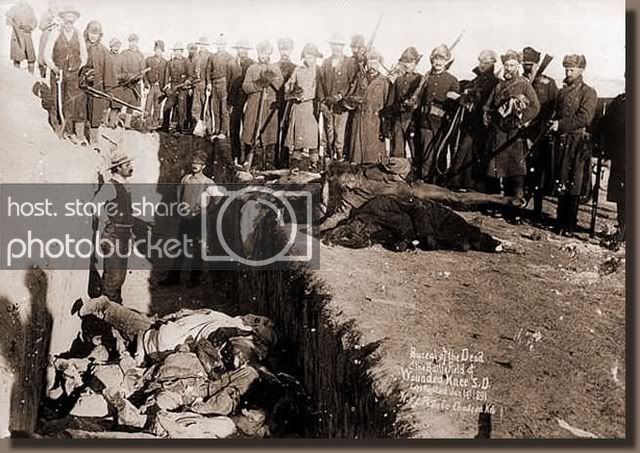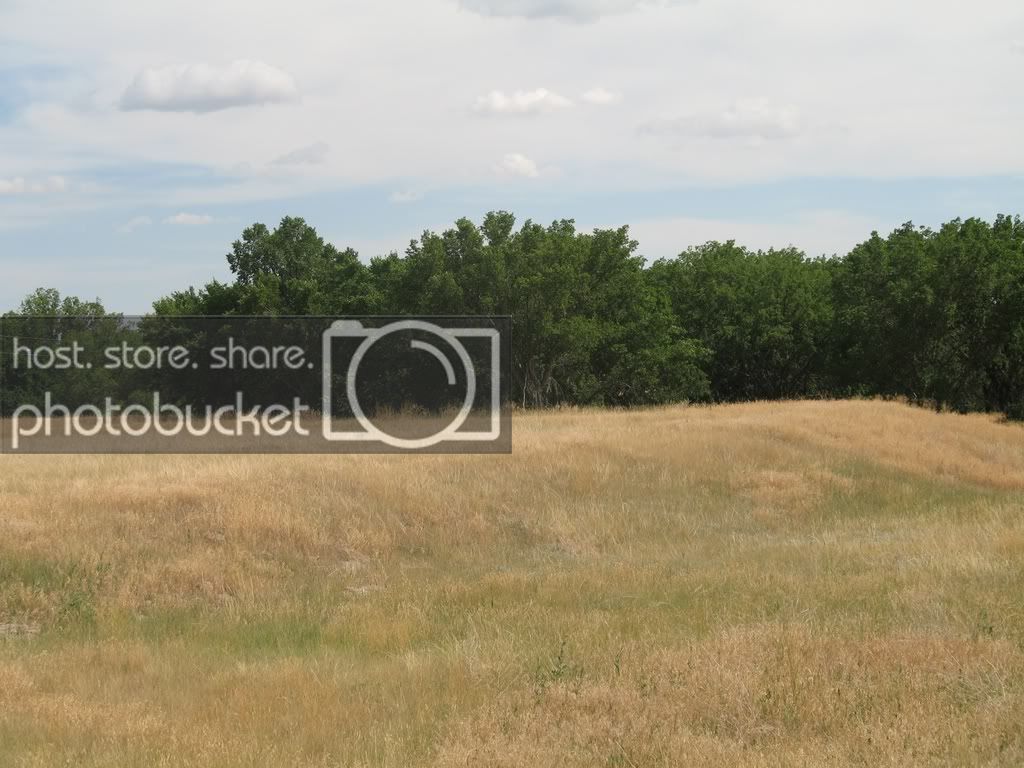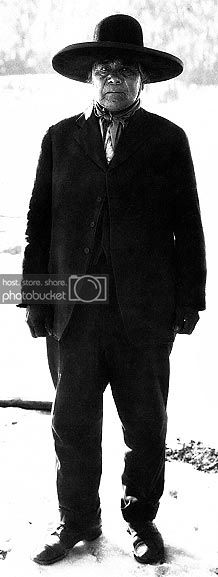((promoted by navajo) – promoted by navajo)

The Native Artist didn’t choose to share secrets of his spirituality or ceremonies and I didn’t ask, but he told me there was a large book of newspaper articles about the Wounded Knee Massacre of 1890 over on the table, “Read it all,” he said. Then, he explained some things to me after I asked the right questions.
First however, I want to repost most of an earlier dairy to put the new information into historical context, then we will proceed.
Crossposted at Progressive Historians
Vital parts of understanding the Wounded Knee Massacre of 1890 are preexisting conditions, Wovoka, and the Ghost Dance.
Thomas E. Mails. “Fools Crow.” p.22:
…The first census was of the Sioux was taken in 1886. Thereafter they were required to have a family name. One of the father’s names was usually taken by the other members of the family, and everyone was given a distinguishing white first name, such as John or Nancy. Some family names, in translation, were unsuitable, so the census takers renamed them with complete English names…1889 and 1890 were years of severe drought, and unlike the white farmers, Indians could not move away to better ground. The buffalo were being systematically wiped out by white hunters, and indeed were virtually gone before 1890. In February 1890, the Dakota Reservation was opened to homesteading by non-Indians, and now the Sioux were ready to turn to anything that would offer them the slightest hope of returning to their old way of life. They prayed desperately, and sought visions from Wakan-Tanka for guidance and deliverance…It was at this point that a Paiute Indian named Wovoka entered the scene…”
Wovoka
Wovoka or “Jack Wilson,” who started the Ghost Dance was the prophet or messiah of the Ghost Dance to the Sioux. They practiced that religion prior the Massacre at Wounded Knee in 1890.
Sitting Bull had been recently assassinated, yet they chose to peacefully dance, believing their way of life, the buffalo, and the land would be returned to them. They chose dancing the Ghost Dance in winter snow over revenge. They stood earnestly by their convictions, even up until the moment that the soldiers started massacring them.
The Ghost Dancers believed their shirts were bullet proof, and that their way of life would be returned. To understand some of why they believed those things; one needs to understand what was believed about Wovoka.
In his early adulthood, Wovoka gained a reputation as a powerful shaman. He was adept at magic tricks. One trick he often performed was being shot with a shotgun, which may have been similar to the bullet catch trick. Reports of this trick may have convinced the Lakota that their “ghost shirts” could stop bullets.
Also, Wovoka was reported to have had the Stigmata, same as
Padre Pio about 30 years later.
I heard an elder talk about Wovoka having the Stigmata, as well as the intent behind the Ghost Dance. It was nothing but peaceful, though it was controversial to many who did not participate. It hasn’t been done since the 1973 Siege of Wounded Knee as far as I know.Some say Wovoka’s Stigmata wounds were self-inflicted; some say his wounds were not.
I don’t know.
In addition, there is a lesser well-known fact about this history: a relationship between Wovoka’s philosophies, his instructions to the Ghost Dancers, and the words of Jesus Christ:
Paiute ~ Wovoka ~ Ghost Dancers
“Jesus is now upon the Earth,” he stated. But again, there is historic contradiction here- Wovoka is quoted as saying he was Christ and he wasn’t Christ. It would seem that either he excelled at playing to different audiences or was damned to being preserved by faulty historians.
Despite the later association of the Ghost Dance with the Wounded Knee Massacre and unrest on the Lakota reservations, Wovoka charged his followers:
“Do not hurt anybody or do harm to anyone. You must not fight. Do not refuse to work for the whites and do not make any trouble with them.”While the Ghost Dance is sometimes seen today as an expression of Indian militancy and the desire to preserve traditional ways, Wovoka’s pronouncements ironically bore the heavy mark of popular Christianity.
I disagree that last sentence, “Wovoka’s pronouncements ironically bore the heavy mark of popular Christianity.”
Here is a historical teaching of fundamentalist, patriarchal, and Dominionist Christianity (not based on Christ’s teachings):
A short excerpt from: “Religion on the Frontier” by Bernard A Weisberger. From “Historical Viewpoints.” pp. 253-254:
The great revival in the West, or the Kentucky Revival of 1800, as it was sometimes called, was a landmark in American History… Which way would the West go?… No group asked this question more anxiously than eastern clergymen. For, in 1800, they saw that their particular pattern was being abandoned on the frontier….McGready began to preach to these congregations, and he did not deal with such recondite matters as the doctrines contained in Matthew
…Instead he would “so describe Heaven” that his listeners would “see its glories and long to be there.” Then he went on to “array hell and its horrors” so that the wicked would “tremble and quake, imagining a lake of fire and brimstone yawning to overwhelm them.”That excerpt contains examples of:
&
These are some words of Jesus:
(Matthew 26:51-52):
And, behold, one of them which were with Jesus stretched out his hand, and drew his sword, and struck a servant of the high priest’s, and smote off his ear. Then said Jesus unto him, “Put up again thy sword into his place: for all they that take the sword shall perish with the sword.”
Compare those words more closely with what Wovoka said, “Do not hurt anybody or do harm to anyone. You must not fight. Do not refuse to work for the whites and do not make any trouble with them.”
No wonder the preachers “did not deal with such recondite matters as the doctrines contained in Matthew,” they would have been morally obligated to preach against the extermination of the indigenous people.
Now, onto the new information I learned.
I stood at the mass grave at the Wounded Knee Massacre recently, where the bones of Big Foot and Standing Bear are amongst all the others who were massacred in 1890 at Wounded Knee.
Here was then:

Here is now:

In addition to the above photo being the mass grave site, it is also the site of where the massacre began, where two soldiers made it look like a deaf man “started it.” Framing him, they grabbed the gun and blamed him as the excuse they needed to begin killing. The soldiers were given forty-six medals of honor for mowing down the disarmed Big Foot’s band (46 if memory serves from information from an original news article from “Lakota Times.” It was not merely 20 medals of honor). They disarmed them before massacring them. Later in 1973 at the Siege of Wounded Knee 1973, it was also the location of the church which once stood in the “firefight” between the FBI and those at the Siege (that church has since been bulldozed). Amongst those were Crow Dog and Mary Crow Dog. “Firefight” is in quotations, because it shouldn’t be called as such. They were defending their lives, family’s lives, land, and their way of life.
Allow me to share the words a friend shared with me on the matter.
The big problem on Pine Ridge was economic before, during and after Wounded Knee II, and the big problem tomorrow will likely still be economic. Pine Ridge has always (even before 1973) been the most poverty-stricken community in the nation. And Pine Ridge has a whole lot of valuable natural resources; coal, uranium, an aquifer with millions of gallons of clean water. In 1868 after getting their deserved butt-kick in battle against the Lakota, the US negotiated the Fort Laramie Treaty and right away began breaking the treaty by stealing Indian land and resources. By the 1970s, the Lakota had lost two-thirds of their land and the government had plans to steal even more – especially uranium filled land.
Early in 1972 Raymond Yellow Thunder was beat to death by two white men in Gordon Nebraska. Attacks on Indian people by racists and Dickie Wilson and his GOONS had been increasing on the reservation and the whites who committed these crimes were seldom punished (like rape charges against Governor Janklow).
The traditional camp represented by Chief Fools Crow and Elders like Ellen Moves Camp and Gladys Bissonette, formed Oglala Sioux Civil Rights Organization and began impeachment proceedings against Dickie Wilson, charging him with use of tribal funds, harassing and failing to protect the rights and interests of the Pine Ridge people. Erosion of the tribal land base and acceptance of government money for lost tribal land were at the heart of the conflict.
But, when Raymond Yellow Thunder was murdered, the Traditionals called on AIM and things got a bit better with Fools Crow welcoming Russel Means and Dennis Banks onto the Rez. And then things got way out of hand and grew worse. And I think maybe Fools Crow soon wished he hadn’t.
Carter Camp has said “I could still hear the words of the traditional chiefs of my Oglala Lakota Nation, spoken earlier that fateful day…Chief Fools Crow had told us: ‘Go to Wounded Knee. There you will be protected.’
Camp: “People were waiting for us to appear on the scene and for some Indians to stand up and say that we’re not going to take this shit no more. We’ve lived under this oppression for so many years. We’re going to fight back now. The American Indian Movement is the force that stood for the people as a warrior society and said we’re no longer going to allow you to roll over our people, to take our land, to pave over our reservations and dam up our rivers.”
But then the FBI – AIM seige happened.
Not a whole lot of people really wanted to talk about what happened in 1973 at the time and they still don’t. But a whole lot of key players sure wrote a lot of books about it. The conflicts and accusations between them are enough to make the head spin and makes me wonder if the truth can ever be known! A pretty condensed history is found on the pages of this link.
“Where White Men Fear to Tread: The Autobiography of Russell Means” by Russell Means vs
“Ojibwa Warrior: Dennis Banks And The Rise Of The American Indian Movement” by Dennis Banks and Richard Erdoes vs
“Loud Hawk: The United States Versus the American Indian Movement” by Kenneth S Stern vs
“Prison Writings: My Life Is My Sun Dance” by Leonard Peltier, Harvey Arden, Chief Arvol Looking Horse, and Ramsey Clark
“Crow Dog: Four Generations of Sioux Medicine Men” by Leonard Crow Dog vs
“Lakota Woman” by Mary Crow Dog“Songs called poems (Living in reality)” by John Trudell
“Who Would Unbraid Her Hair: the Legend of Annie Mae” by Antoinette Nora Claypoole
“The Unquiet Grave: The FBI and the Struggle for the Soul of Indian Country” by Steve Hendricks
To compliment this, here’s some more information about the Siege Of Wounded Knee 1973:
A TATTOO ON MY HEART: THE WARRIORS OF WOUNDED KNEE 1973 – Synopsis
Nowhere was that awakening more profound, nor reaction by the government greater than around the Pine Ridge Reservation in South Dakota. Racism and violence against Indians, corruption, and repression of traditional people on the reservations had left many Indians desperate. After the brutal deaths of two Indian men, traditional leaders called upon AIM. Fearing a takeover of tribal headquarters, federal law enforcement, armed with modern weapons and armored personnel carriers moved to protect the tribal government.
On February 27, 1973 traditional and AIM leaders chose another location to make a stand-the site of the 1890 massacre at Wounded Knee. Cold, hungry, and armed only with hunting rifles, fake guns, and one AK-47, they held out for 71 days against the US government. Over 500,000 rounds were exchanged between federal officers and Indians during the siege. Two Indians were killed, and several other wounded.
Nearly 600 federal criminal charges were filed. A Tattoo on My Heart: The Warriors of Wounded Knee 1973 tells this dramatic and emotional story in the words of those men and women who struggled for survival inside the bunkers and ravines at Wounded Knee.
I believe this is a core issue of the Siege of Wounded Knee 1973:
What do you think? I’ll say what I think in the conclusion.
Going back to 1890 from 1973, more people survived if they tried to escape through this tree row, because there was more tree cover.

More were massacred if they tried to escape through this tree row, because there was much less tree cover.


The truth has still been tried to be slanted and concealed, even after over one century ago, because the old sign said that there were 150 warriors. The truth is, there were only 40 warriors (the sign at the beginning of this diary records the truth of there being 40 warriors).
To conclude, I think that forgiveness will be very difficult, especially as long as this history is revised to suite the “victors,” the Black Hills continue to be raped, and the fact that many deny the problems indigenous people still face are because of the direct and long lasting effects of the United States extermination policy against them in the most immediate forms of Intergenerational Boarding School Trauma and the Forced Sterilizations that ended in the approximate 1950’s (when Indian Boarding Schools closed) and mid 1970’s, respectively. This is not even mentioning Alex White Plume’s case regarding his attempts to grow Hemp.
However, I sincerely hope that reparations and forgiveness will someday become reality. For forgiveness leads to healing prayers and healing actions in my personal experience, and I believe that healing prayers and healing actions such as the Big Foot Memorial Ride can and will mend the sacred hoop.

1 Comment